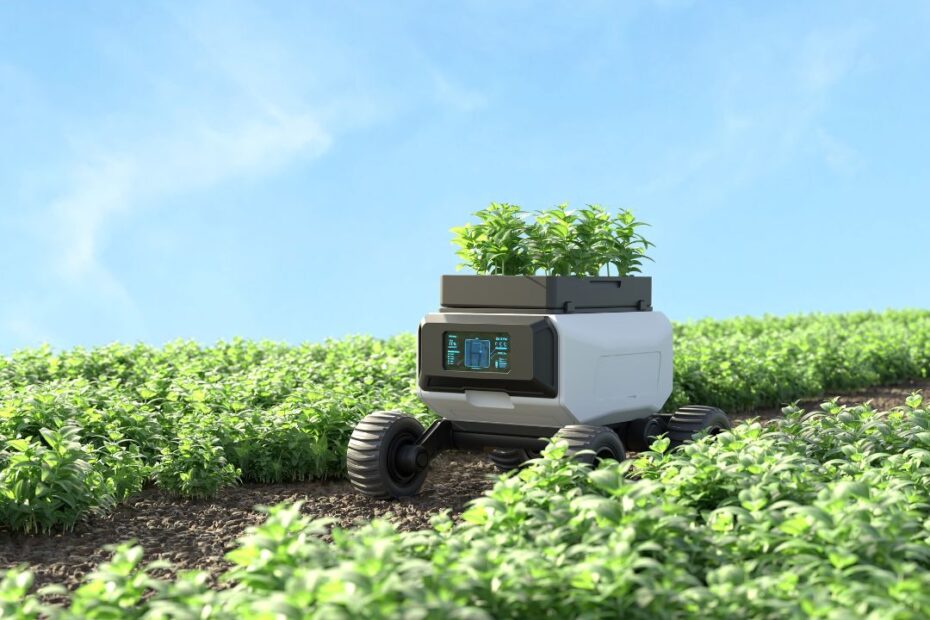The integration of Internet of Things (IoT) technology in agriculture is revolutionizing the way farming practices are conducted and paving the way for a more efficient and sustainable future. With the ability to connect devices, sensors, and equipment to the internet, farmers can now monitor and manage their crops and livestock with unprecedented precision. This article delves into the diverse applications and benefits of IoT in agriculture, exploring how it is reshaping the farming landscape and offering new opportunities for increased productivity, resource optimization, and environmental sustainability.
1. Introduction to IoT in Agriculture
- The Evolution of Agriculture Industry
From humble hand-plows to high-tech tractors, farming has come a long way. The agriculture industry has embraced innovation to meet the demands of a growing population and changing climate. - Defining IoT and Its Role in Agriculture
IoT, or the Internet of Things, refers to the network of interconnected devices that collect and exchange data. In agriculture, IoT technology allows farmers to monitor and manage their operations more efficiently, leading to smarter decision-making and improved yields.
2. Benefits of Implementing IoT in Farming
- Increased Efficiency and Productivity
With IoT sensors monitoring soil conditions, crop health, and equipment performance in real-time, farmers can make timely adjustments to optimize their operations and maximize productivity. - Resource Optimization and Cost Reduction
By precisely managing water, fertilizers, and pesticides based on data-driven insights from IoT devices, farmers can reduce waste, lower input costs, and minimize environmental impact.
3. IoT Applications in Crop Monitoring and Management
- Remote Sensing and Precision Agriculture
Using drones, satellites, and sensors, farmers can collect detailed information about their fields, such as soil moisture levels, nutrient content, and pest infestations, to tailor their farming practices for optimal results. - Smart Irrigation Systems
IoT-enabled irrigation systems automatically adjust watering schedules based on weather forecasts and crop needs, ensuring that plants receive the right amount of water at the right time, conserving resources and promoting healthy growth.
4. Enhancing Livestock Management with IoT Technology
- Health Monitoring and Tracking
IoT devices attached to livestock can track vital signs, activity levels, and location in real-time. It can help farmers identify and address health issues promptly, improving animal welfare and overall productivity. - Automated Feeding Systems
IoT-powered automated feeding systems dispense precise portions of feed based on individual animal needs, promoting uniform growth, reducing food wastage, and streamlining feeding operations for farmers.
5. Sustainable Agriculture Practices Enabled by IoT
- Environmental Monitoring and Conservation
Imagine a world where your crops whisper their needs to you, and the environment itself becomes an ally in farming. With IoT, sensors can monitor soil moisture levels, temperature, and even air quality in real-time. This data allows farmers to make precise decisions, reducing water waste and minimizing environmental impact. - Promoting Precision Farming for Sustainability
Gone are the days of one-size-fits-all farming practices. IoT enables precision farming, where each plant is treated as an individual with its own set of needs. By using data from IoT sensors, farmers can tailor irrigation, fertilization, and pest control strategies, leading to higher yields and resource efficiency.
6. Challenges and Opportunities in Adopting IoT in Agriculture
- Data Security and Privacy Concerns
As we connect our farms to the digital world, concerns about data security and privacy loom large. With valuable information being collected and shared across networks, it’s crucial to establish robust cybersecurity measures to safeguard farm data from malicious actors. - Integration and Interoperability Challenges
The tech world is vast and varied, and ensuring seamless communication between different IoT devices and platforms can be a headache. Farmers adopting IoT must navigate the complexities of integrating diverse technologies to create a cohesive farming ecosystem.
7. Future Trends and Innovations in IoT Farming Technologies
Artificial Intelligence and Machine Learning in Agriculture
Picture AI-powered drones scouting your fields, detecting pests, and suggesting optimal treatment plans. With advancements in AI and machine learning, farmers can harness the power of predictive analytics to make informed decisions and boost overall farm productivity.
Blockchain Applications for Supply Chain Transparency
Say goodbye to murky supply chains and food fraud. Blockchain technology offers a transparent and immutable record of every step in the agricultural supply chain, from seed to table. By leveraging blockchain, farmers can build trust with consumers by providing verifiable information about the origin and journey of their produce. As IoT continues to advance and evolve, its impact on agriculture is poised to grow even further. It can offer endless possibilities for innovation and improvement in farming practices. By embracing and harnessing the power of IoT technologies, farmers can ensure a more sustainable and productive future for the agricultural industry. With ongoing developments and the integration of cutting-edge solutions, the future of farming looks brighter than ever before.


Pingback: The Role of Feedback Control Systems in Modern Technology
Comments are closed.